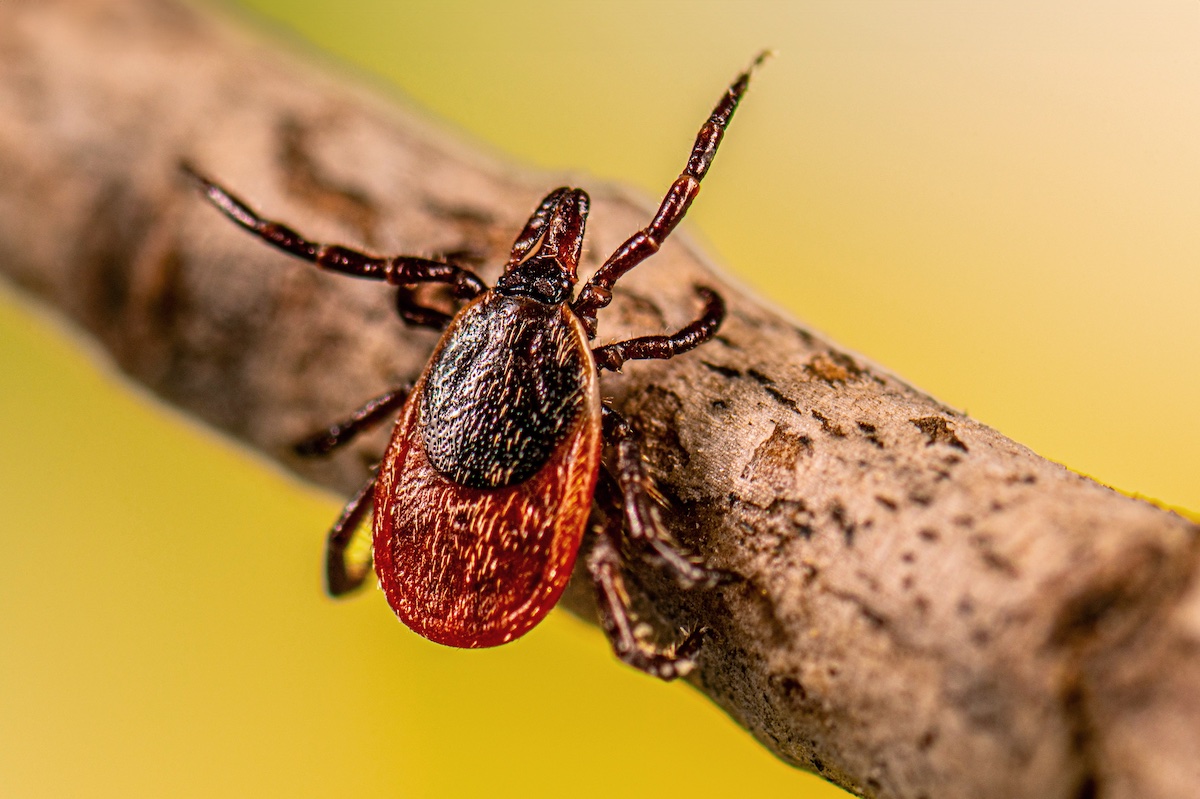Spring is in the air, bringing with it green leaves, colorful flowers and — unfortunately — ticks.
Winter is ending earlier each year, and the National Ocean and Atmospheric Administration recently confirmed that 2023 was the hottest year on record. While people are familiar with the many devastating effects a warming climate has on human health, some knock-on implications are less apparent, like the spread of Lyme disease and other tick-borne illnesses.
A glance at the research
Studies from the U.S. Global Change Research Program show that climate change has contributed to the expanded range of ticks, consequently increasing the risk of Lyme disease.
A Scientific American article published in March explained that warmer winter temperatures have coaxed black-legged ticks into regions that have historically been too harsh for them; milder spring and fall seasons have given them more time to breed. And according to the U.S. Environmental Protection Agency, deer ticks are the most active when temperatures are above 45 degrees Fahrenheit and thrive in areas with at least 85% humidity.
What’s more, the economic burden of Lyme disease in the United States is between $345 million and $968 million each year (in 2016 U.S. dollars), according to the CDC. This makes prevention and early diagnosis key to reducing illness and cutting back on costs — and that’s where health reporters come in.
It’s crucial to explain to your audience how Lyme disease is transmitted and contracted, and how to recognize an infection. Journalists can refer to the CDC’s detailed guides on how to recognize the disease as well as printable brochures and posters to direct readers to.
Also, according to a 2021 NIH study, many diagnoses are frequently misattributed to Lyme disease. With the increased range of deer ticks, the overdiagnosis phenomena will likely continue. One story idea to consider is highlighting the rates of Lyme disease misdiagnosis in your area.
More on Lyme disease and climate change
Lyme disease is the most common vector-borne disease, with approximately 63,000 cases reported to the CDC in 2022. Recent estimates using other methods suggest the number could be as high as 476,000 cases per year in the U.S. It is transmitted through infected deer ticks that carry the bacteria and pass it when they bite.
The deer tick got its namesake from living on deer, but they also live on other host animals like rodents and birds. Lyme disease is one of many diseases transmitted to humans by ticks or mosquitoes that the CDC tracks.
In a controlled lab experiment using freezers, researchers found that ticks die at temperatures between -2 to 14 degrees Fahrenheit, according to the Pennsylvania Department of Conservation and Natural Resources. But lab conditions can’t emulate the conditions ticks experience in their natural habitats.
With winters increasingly shorter and warmer, ticks will have longer active periods and greater potential contact with humans. Unlike some other vector-borne diseases, tick-borne disease patterns are generally less influenced by short-term changes in weather (weeks to months) than by longer-term climate change, which is why the EPA uses Lyme disease as a climate change indicator.
The transmission of Lyme disease is controlled by many factors, with climate being just one of them. The population of host species greatly affects the number of disease cases, and this is something that can also be affected by climate change.
Harsh weather, which is intensified by climate change, impacts tick populations in negative ways as well. There are some parts of the world, specifically water-stressed areas, that have become less welcoming to ticks. The drought or lack of snow cover (the species needs snow to buffer the cold winters) can lead to declining populations and decreased activity.
Takeaways and story ideas for reporters
Health journalists have a unique position to report on this topic from a public health perspective by directing people to beneficial, factual resources. Covering Lyme disease can often put journalists in a challenging position because they may feel the need to recognize and affirm the suffering of patients, while also critically calling out scientifically unsupported reports.
Diligent reporting can help stakeholders bust myths about the disease, while recognizing trends that may be surrounding diagnosis. For example, it’s crucial for reporters to highlight the numerous behavioral factors that go along with increased exposure like occupation and awareness of the disease.
Some story ideas to consider:
- What misinformation have you seen around Lyme disease?
- How do states with high rates of Lyme disease (New England states) communicate the public health risk of transmission?
- What treatments are most common in your region, and do they differ from other places?
- What new treatments are being developed for Lyme disease and who is funding them?
- What is a common misconception you hear about Lyme disease and can you trace back where it comes from?
If you want to get in talk to an expert on Lyme disease, contact Lyme Disease Action. You can also request informational leaflets on their contact page.
Additional resources
- Climate change is fuelling a spike in Lyme disease cases across Canada — CBC
- What’s Behind the Rise of Ticks and Tick-Borne Illnesses? — Sierra
- The U.S. is unprepared for the growing threat of mosquito- and tick-borne viruses — NPR
- Climate Change Indicators: Lyme Disease — EPA
- Diseases Carried by Vectors — CDC
- Cases of tick-borne illnesses are on the rise. Some experts believe climate change is the cause — AP News
- Ticks spreading in the Pacific Northwest? Warming trends could worsen health threat — The Seattle Times
- When Climate Gets Under Your Skin — NASA











